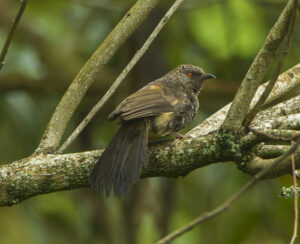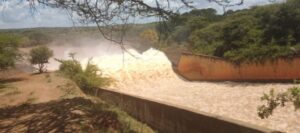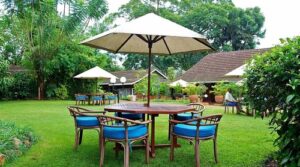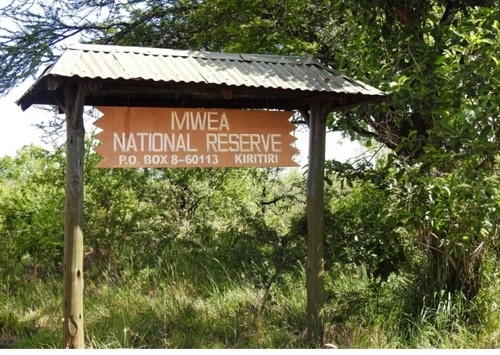Did you know Mwea National Reserve has one of the endangered bird species in Kenya? Moreover, Mwea National Reserve attractions are mainly birds that inhabit the region, and so Mwea National Reserve activities include birdwatching among others.
In this guide, Naicef shows you more activities, fun facts, the Mwea National Reserve accommodations, and entrance fees in this guide.
Mwea National Reserve is a hidden gem among Kenya’s wildlife sanctuaries, offering a unique blend of rich biodiversity, tranquil landscapes, and a peaceful atmosphere away from the other crowded parks.
Mwea National Reserve is co-managed by Kirinyaga County and the Kenya Wildlife Service (KWS).
Interestingly, this national reserve is a perfect destination for nature lovers, wild animals, bird watchers, and anyone looking to enjoy a serene safari experience.
For a personalized experience to this hidden gem, my@naicef.com or +254799922277 to see the best Mwea National Reserve attractions and things to do in Mwea.

Interesting Facts About Mwea National Reserve
Here are some interesting facts about Mwea National Reserve that I bet you didn’t know;
Have you heard of Pel’s fishing Owl?
Pel’s fishing Owl is a large, rare, and distinctive species of Owl found in sub-Saharan Africa, especially near rivers and Lakes.
This beautiful owl is known for its large size, measuring up to 63cm in length, and its rich colour features are also known to have a unique eye colour that is black or brown, compared to other owls with yellow eyes.
Mwea National Reserve is one of the few reserves in Kenya where the rare Pel’s fishing owl has been spotted.
Furthermore, the reserve lies at the confluence of the Tana and Thiba rivers. From this, enjoy seeing two rivers meeting in a reserve. Isn’t that interesting?
Also, the Tana and Thiba rivers form natural boundaries and are water sources for the wildlife in Mwea National Reserve.
Mwea National Reserve covers an area of 42 square kilometres. Within this place, you will find a diverse mix of natural features and wildlife habitats.
Did you know Mwea is a birding paradise with over 200 recorded bird species? It is called a birding paradise due to its rich, diverse birdlife.
With over 200 recorded bird species, as stated, the reserve offers a rich variety of birds in a peaceful, less crowded setting, making it ideal for both amateurs and bird experts.
Moreover, the reserve is less visited, making it ideal for private and quiet game drives.
Where Is Mwea National Reserve Located?
Mwea National Reserve is located in Embu County, Kenya.
The reserve lies approximately 200 km from Nairobi and can be accessed by road via the Thika–Matuu–Makima route.
Mwea National Reserve Entrance Fee
Before visiting the reserve, one might ask, ‘ What are the Mwea National Reserve entrance fees?’
Below is a summarised list of the latest Kenya Wildlife Service rates for Mwea National Reserve charges:
Mwea National Reserve Entrance Fee For Citizens
Adults – Ksh 300
Children -Ksh 215
Mwea National Reserve Entrance Fee For Non-residents
Adults – USD 25
Children -USD 15
Mwea National Reserve Attractions
The best Things To See in Mwea National Reserve include:
1. Birdlife
Birdlife in Mwea National Reserve is one of the most outstanding features, making it a key destination for bird enthusiasts in Kenya.
If you’re lucky enough, you’re going to see over 200 species, including the white-backed night heron, Pel’s fishing owl, and malachite kingfisher.
Moreover, see the best birdwatching places in Kenya!
2. Wildlife
Wildlife in Mwea National Reserve is diverse and well-adapted to the reserve’s mix of savannah, riverine forests, and wetlands.
Mwea National Reserve is not as heavily populated with big game as some of Kenya’s larger parks. This, therefore, makes Mwea offers a peaceful and authentic wildlife experience.
Additionally, the reserve has 90 recorded species of the Reticulated giraffe.
There are several wildlife species you can find in Mwea National Reserve, including:
– Elephants– Mwea National Reserve gives you elephants that are often sighted near water areas like rivers, acting as watering points.
– Buffaloes– They walk in herds and are common in the grasslands and open woodlands.
– Giraffes– Gracefully roam the savannah, feeding on acacia trees.
– Zebras and Impalas– Frequently seen grazing in open areas.
– Warthogs and Bushbucks– Regularly spotted near the bushy areas and riverbanks.
– Hippos and Nile Crocodiles– Found in and around the Tana, Thiba Rivers, and Kamburu Dam.
Despite not having predators like the wild cats, the tranquil environment, rich birdlife, and easily visible herbivores make it ideal for relaxed, crowd-free wildlife viewing.
Here are the best Kenya Safari Packages: Naicef Safari Packages in Kenya
3. Kamburu Dam
Kamburu Dam is a significant feature within Mwea National Reserve, both environmentally and scenically.
It lies along the Tana River and is part of the Seven Forks hydroelectric power project in Kenya.
Below are some of the roles of Kamburu Dam in Mwea:
Water Source- It provides a vital water source for the reserve’s wildlife, especially during dry seasons.
Habitat– Kamburu is home to aquatic life, eg, hippos, crocodiles, fish species, and attracts water birds.
Scenic Spot– the dam adds to the beauty of the landscape, making it a perfect place for photography, bird watching, and relaxation.
Ecological Value – Kamburu Dam enhances the ecological value and tourist experience of Mwea National Reserve, making it a key attraction within the area.
4. Tana River
River Tana is Kenya’s longest river in Kenya, flowing from the Aberdare Ranges to the Indian Ocean.
In Mwea, it forms part of the reserve’s boundary and supports wildlife, vegetation, and the Kamburu Dam.
It provides a habitat for hippos, crocodiles, and many bird species.
Do you know about the things to do in Aberdare National Park, what to see, and where to stay in Aberdare National Park?

5. Thiba River
A smaller river compared to the Tana, but equally important within the reserve.
It joins the Tana River near the reserve, creating a confluence that supports wetlands and lush vegetation.
Essential for maintaining the riverine forest and birdlife in the area.
Together, the Tana and Thiba Rivers make Mwea National Reserve a thriving habitat for both aquatic and land animals, while enhancing its beauty and biodiversity.
6. Savannah Scenery
Open grasslands and scattered trees characterise the reserve.
Provides grazing areas for animals like zebras, impalas, buffalo, and giraffes.
This area is Ideal for game drives as animals are easier to spot in the open terrain.
The Savannah scenery offers wide, panoramic views perfect for photography and sunsets.
7. Woodland Scenery
It features areas with thicker vegetation, including acacia trees and riverine forests along the Tana and Thiba Rivers.
Woodland scenery offers shelter and food for animals like bushbucks, warthogs, and various bird species.
This area creates a peaceful, shaded environment ideal for nature walks and bird watching.
Therefore, the mix of savannah and woodland scenery adds to the reserve’s natural beauty and ecological richness, making it a great destination for nature lovers.
Mwea National Reserve Activities & Things To Do
Some of the best Things To Do In Mwea National Reserve include;
1. Game Viewing
Mwea offers rewarding game drives through its open savannah and woodland areas.
Visitors can spot a variety of animals such as elephants, giraffes, buffalo, zebras, impalas, and warthogs.
The peaceful setting and light visitor traffic allow for relaxed, uncrowded wildlife viewing.
2. Bird Watching
Known as a birding paradise, Mwea is home to over 200 bird species. Bird watchers can spot rare and unique species like the Pel’s fishing owl, kingfishers, herons, and African fish eagles, especially around the rivers and wetlands.
The Hinders Babblers’ endangered bird species can only be seen in Mwea National Reserve.
On your bird watching safari with Naicef, carry your binoculars to spot them!
3. Boat Rides on Kamburu Dam
Boat rides on Kamburu Dam offer a unique perspective of the reserve. Visitors can enjoy scenic views, observe hippos, crocodiles, and aquatic birds, and experience the peaceful water environment. It’s a perfect mix of relaxation and wildlife observation.
4. Nature Walks
Guided nature walks provide an up-close experience with the environment.
Walkers can explore riverine forests, savannahs, and woodlands, learning about local plants, animals, and birdlife while enjoying the fresh air and tranquillity.
5. Camping and Picnicking
The reserve has designated sites for camping and picnicking, ideal for those who want to spend more time in nature.
Campers can enjoy the peaceful surroundings, starry skies, and the sounds of wildlife in a safe, natural setting.
These activities make Mwea National Reserve a perfect destination for eco-tourism, education, and relaxation.
Mwea National Reserve Accommodations
Where to stay at Mwea National Reserve?
When it comes to Mwea National Reserve accommodation, it depends on the interest the customer has.
Mwea National Reserve Accommodation Inside The Reserve are
For those who are interested in camping, basic camping facilities are available in the Mwea National Reserve with enough guards and guides for security and company.
Mwea National Reserve Accommodation nearby options include
There are also lodges and guesthouses in Makima and Embu town, such as Izaak Walton Inn and Mwea Guest House.

Best Time To Visit Mwea National Reserve
When is the best time to visit Mwea National Reserve?
The best time to visit Mwea Reserve is during the dry seasons from June to October and January to March. During these periods, animals are easier to spot, and the roads are more accessible.
Conclusion
In conclusion, Mwea National Reserve is the best birdwatching reserve in Kenya.
It is known as the birdwatching paradise.
The best accommodation and hotels in and around the reserve are Izaak Walton Inn and Mwea Guest House.
The best attractions and activities to enjoy in this reserve are:
- Bird safaris
- Boat safaris
- Game viewing
- Nature Walks
- River Tana and Thabi
To have the best tour in Kenya’s national reserves, contact Naicef for the best African experiences.
We are the best tour company in Kenya in packaging national parks and reserves because we focus on;
- Customer Centricity: We customise the best tours in Kenya and give the best to each traveller.
- Quality: We craft African experiences with quality for the best memorable safaris.
- Professionalism: our team is professional in creating a long-lasting relationship with all travel partners.
Moreover, on every safari you take with Naicef, you contribute to Sustainable tourism through our sustainable environmental and local community programs. Naicef focuses on raising responsible tourists.
For the best Kenyan safaris, contact Naicef via my@naicef.com or +254799922277
You can also opt for our Naicef savings plan to plan your visit to any national parks and reserves in Kenya.
Whether you’re a bird enthusiast or a first-time safari-goer, Mwea is worth discovering.
Frequently Asked Questions about Mwea National Reserve, Kenya
Below are the frequently asked questions about the reserve
1. Is Mwea National Reserve suitable for family visits?
Yes, it is family-friendly, especially for nature walks and picnics.
2. Do I need a 4×4 vehicle?
It is recommended, especially during the rainy season.
3. Are there guided tours available?
Yes, you can book guides through KWS or tour operators.
4. Is there network coverage?
Network coverage is available but may be limited in some areas.
5. Can I visit for a day trip?
Yes, it’s suitable for both day trips and overnight stays.




